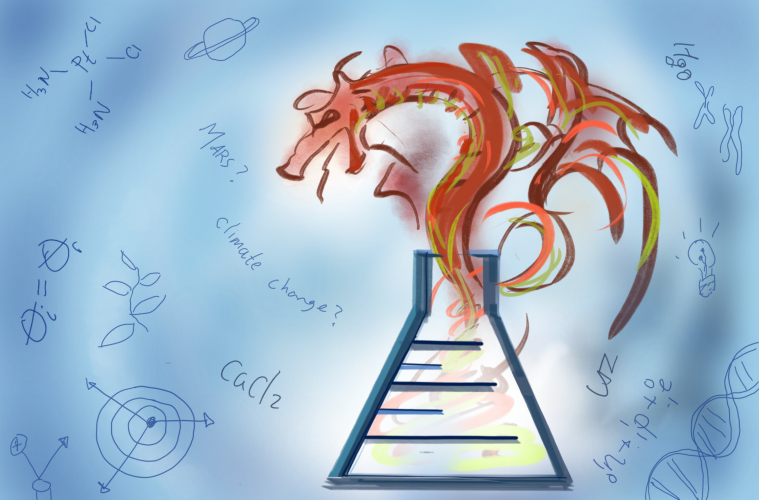The Science Hub: fish in the Congo River, Betelgeuse, new treatment for anxiety
The Science Hub is a bi-weekly newsletter to update you on science headlines, including a piece by guest writer Alex Dodos.
January 20, 2020
Fish in the Congo
Over a decade before research on the river was presented at the meeting of the American Geophysical Union this winter, an unknown species of pale and blind fish were found dead in the Lower Congo River.
Scientists would occasionally find a species of cichlid washed up with decompression syndrome (DCS), which occurs when a fish rises too quickly from deep to shallow water; the pressure change causes gases in the body to turn to bubbles and is usually deadly. This unusual nature of death, in addition to the blindness and depigmentation usually found in cavefish, prompted the exploration of the possibility of deeper regions of the river.
It turns out that the Congo River is deep. Reaching almost 720 feet in some regions, no other river comes close to the depth. In comparison, the Mississippi reaches only 200 feet, over three times shallower than the Congo.
This level of depths in fast-moving water creates powerful currents and underwater rapids. As a fish swims into one of these currents, it is launched towards the surface at high speeds, resulting in DCS.
Recently, it has also been discovered that these underwater currents have enough power to separate species. Over 600 species of fish are present in the Congo, 80% of which are found nowhere else in the world. The currents can provide enough of a barrier to force the fish to evolve when only living about a mile away from each other.
-Naomi Schmitt
Betelgeuse may go supernova
Largely invisible to a casual observer of the night sky, Betelgeuse, one of the brightest stars in the night sky has drastically dimmed over the course of three months. Though Betelgeuse periodically dims and brightens, this dimming makes the star fainter than almost ever.
A variety of possible explanations exist, with the most exciting being that the star may be about (relatively speaking) to become a supernova. For Betelgeuse to become a supernova, the atoms in its core need to fuse into iron and run out of fuel.
However, the time frame of a star becoming a supernova is not known and more mundane explanations for the dimming exist, such as a fall in energy in the star or matter from the star obscuring the star.
-Thomas Weldele
Discovery of 2-AG molecule and possibly new treatment for anxiety
Anxiety affects everyone to one extent or another. Anxiety is mostly a biological response to fear, and it has no immediate psychological fix.
Anxiety can be traced to your limbic system and the amygdala in particular. When someone experiences a panic attack, the amygdala produces excitatory neurochemicals and stress-causing hormones.
Now, there is new hope for defeating anxiety: scientists discovered a new molecule 2-AG, which prevents anxiety-related neurochemicals from causing anxiety. The problem with 2-AG is that it stops doing its job when the brain is exposed to any real stress. If the case was anything otherwise, anxiety would not be an issue.
THC, the main psychoactive compound in cannabis, helps temper anxiety in the same way that 2-AG does. The difference is that THC stays more effective under stress which is why normally anxious people are drawn to using THC or CBD (another compound found in cannabis) for relief.
Yet using Cannabis for anxiety can have many negative side effects, and using it as a crutch for anxiety can also lead to addiction. Researchers hope to find a treatment that can keep the brain’s 2-AG molecules constantly active, even during times of stress. That way, people can benefit from the anxiety-relieving effects of Cannabis without having to use it.
-Alex Dodos
















